Daniel Ken Inouye was born on September 7, 1924 in Honolulu, in what was then the US territory of Hawaii. Inouye’s parents were the children of Japanese immigrants. His father, Hyotaro Inouye, was the son of laborers, while his mother, Kame Imanaga, was an orphan who had been adopted by a Methodist minister’s family. From a young age, Inouye’s parents instilled in him the importance of helping others. In high school, Inouye volunteered for the Red Cross and decided he wanted to become a surgeon.
On Sunday, December 7, 1941, the Imperial Japanese Navy bombed the US naval and air bases at Pearl Harbor. In an oral history interview with The National WWII Museum, Inouye remembered his experience on that fateful day. He was getting ready for church, as he did every Sunday, and happened to be listening to the radio as he put on his shirt and tie. When the radio announcer began frantically repeating that Pearl Harbor was under attack by the Japanese, Inouye and his father went outside their home. “We looked towards Pearl Harbor and puff! All the smoke. And you could see puffs of the anti-aircraft shells exploding. And then, all of the sudden, three aircraft flew right over us. Green color with the red dot in the wing. I knew my life had changed.” Inouye, a 17 year old high school senior, rushed to a Red Cross aid station to help civilians and sailors wounded in the attack.
The damaged battleship USS Maryland floats next to the capsized USS Oklahoma while smoke billows from other ships in the aftermath of the Japanese attack on Pearl Harbor. Courtesy of the National Archives and Records Administration.
When Inouye graduated high school in 1942, he promptly attempted to enlist in the US Army. The American government, however, denied all Americans of Japanese descent the right to serve in the armed forces. “Though I was a citizen of the United States,” Inouye explained, “I was declared to be an enemy alien and as a result not fit to put on the uniform of the United States.” In the continental United States, the federal government imprisoned 112,000 men, women, and children of Japanese descent beginning in March 1942. More than 70,000 of those incarcerated were American citizens. No charges were brought against them, and they could not appeal their confinement. The US government did not incarcerate the millions of American citizens who had been born in Italy or Germany, even though the United States was also at war with those nations. Inouye and his family were spared this fate because Japanese Americans made up such a large percentage of the population in Hawaii that their removal would have crippled the islands’ economy.
Americans of Japanese descent arrive at the Santa Anita Assembly Center in April 1942 guarded by US soldiers. Courtesy National Archives and Records Administration.
Even though Inouye knew that thousands of Japanese Americans were being wrongfully imprisoned and deprived of their property, he and other men of Japanese descent petitioned the US government to allow them to serve in the armed forces. Consequently, the government changed its policy and announced the formation of several segregated Japanese American battalions. Upon hearing the news, Inouye immediately quit his pre-med studies at the University of Hawaii and enlisted in the US Army. He was assigned to Company E in the 2nd Battalion of the 442nd Regimental Combat Team, a regiment made up exclusively of Japanese American enlisted men but commanded almost entirely by Caucasian officers.
E Company, 2nd Battalion, 442nd Regimental Combat Team stands in formation at Camp Shelby, Mississippi, in May 1943. Courtesy National Archives and Records Administration.
Inouye performed well in basic training and was promoted to sergeant within a year. Since the US military did not trust the American soldiers of Japanese descent to fight Japan’s soldiers, the US Army deployed these soldiers exclusively to Europe. Inouye’s regiment fought in the Italian theater beginning in the summer of 1944, and Inouye was designated as a sniper in recognition of his skill with a rifle.
His unit then took part in the fighting in France where it successfully rescued the First Battalion of the 141st Infantry Regiment of the 36th Infantry Division, which had been surrounded by German forces. The 442nd suffered devastating casualties in the assault. Some companies in Inouye’s regiment had fewer than a dozen men when the engagement ended. Inouye’s company was one of the most fortunate. It began the fight with approximately 150 men, and had 42 men fit for duty following the battle. Inouye himself narrowly escaped death in France when a bullet struck him in the chest but was stopped by the lucky silver dollars he always carried in his breast pocket. In recognition of Inouye’s courage and leadership during the battle, he was given a rare battlefield commission that made him a second lieutenant. Second Lieutenant Inouye also received the Bronze Star Medal for his heroism.
In early 1945, Inouye and the 442nd Regiment returned to Italy. On the morning of April 21, 1945, Inouye realized he had lost his lucky silver dollars. That same day, he led his platoon in an assault on a German-held ridge near the village of San Terenzo. Three German machine guns opened fire on Inouye and his men as they attacked. A bullet pierced Inouye’s torso, but he continued to advance, shouting encouragement to his platoon and throwing grenades. He crawled to within five yards of the enemy emplacement and threw two more grenades, killing the enemy machine gunners. He then killed the crew of a second machine gun with his submachine gun.
Inouye proceeded to pull the pin on another grenade and prepared to lob it at a third machine gun nest. He recounted what happened next: “As I drew my arm back, all in a flash of light and dark I saw him, that faceless German, like a strip of motion picture film running through a projector that’s gone berserk. One instant he was standing waist-high in the bunker, and the next he was aiming a rifle grenade at my face from a range of 10 yards. And even as I cocked my arm to throw, he fired and his rifle grenade smashed into my right elbow and exploded. I looked at my dangling arm and saw my grenade still clenched in a fist that suddenly didn’t belong to me anymore.” Inouye yelled to his men to keep back, pried the live grenade from his mangled arm, and hurled it at the enemy soldier.
Despite Inouye’s grievous injuries, he continued advancing and firing his submachine gun with his uninjured left arm. Moments later, a bullet struck Inouye’s leg, and he lost consciousness. When Inouye regained consciousness, he refused to be evacuated until he was sure his platoon had secured its objective. He continued to direct his men as they deployed in a defensive position in case of an enemy counterattack. Inouye and his men killed a total of 25 enemy soldiers and captured eight others in the successful attack.
Nine hours after being wounded, Inouye finally arrived at a field hospital. Doctors doubted he would survive, but Inouye insisted they attempt the operation. He had already been given so much morphine that doctors could not risk administering further anesthetics, and consequently he underwent the surgery without sedation. He received a total of 17 blood transfusions.
Over the next two weeks, Inouye underwent a series of surgeries, including one to amputate his right arm on May 1. His life was spared, but his hopes of being a surgeon were dashed. He was awarded the Distinguished Service Cross for his bravery and spent the next two years in army hospitals recuperating. Like thousands of wounded veterans, Inouye had to relearn how to do even the simplest tasks, like lighting a match with one hand. He was honorably discharged from the US Army in 1947 with the rank of captain.
Representative Inouye talks to President John F. Kennedy in April 1962. Courtesy John F. Kennedy Presidential Library and Museum.
When Inouye returned home to Honolulu, he enrolled at the University of Hawaii under the provisions of the GI Bill and obtained a bachelor’s degree in government and economics. He married Margaret Shinobu Awamura in 1949 and received his law degree from George Washington Law School in 1952. Inouye became active in Hawaiian politics, and when the territory received statehood in 1959, he was elected to serve as one of Hawaii’s first delegates to the US House of Representatives. He went on to win election to the US Senate in 1962 and served a total of 53 years in the House and Senate. He never lost an election during his entire political career. He was known for his energetic advocacy of his home state, his bipartisanship, and his commitment to fighting discrimination. Inouye was the first Japanese American to serve in Congress, and, as President pro tempore of the United States Senate from 2010 to 2012, he was third in the line of succession to the presidency.
President Bill Clinton awards Senator Daniel Inouye the Medal of Honor on June 21, 2000. Courtesy US Government.
In the 1990s, Congress and the US military began reviewing the cases of soldiers in World War II who had received the Distinguished Service Cross but may have been denied the nation’s highest honor due to racism. As a result, on June 21, 2000, Inouye and 19 other Japanese American veterans of the 442nd Regiment were awarded the Medal of Honor by President Bill Clinton. Daniel Inouye died on December 17, 2012, at the age of 88. He was posthumously awarded the Presidential Medal of Freedom for his lifelong public service.
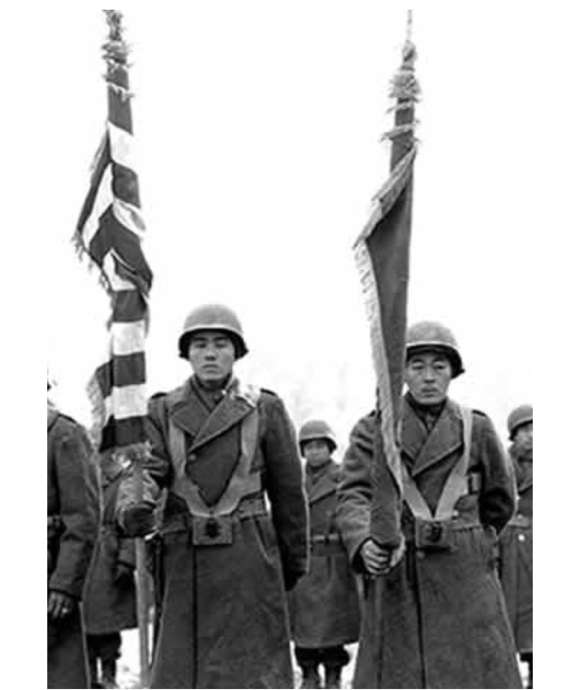
From Barbed Wire to Battlefields: Japanese American Experiences in World War II
During World War II, individuals of Japanese ancestry in the United States, predominantly American citizens, had their lives turned upside down. Learn more about this topic on the site dedicated to the Museum's special exhibit, From Barbed Wire to Battlefields: Japanese American Experiences in WWII.
Tyler Bamford
Tyler Bamford was the Sherry and Alan Leventhal Research Fellow at the Institute for the Study of War and Democracy at The National WWII Museum from 2019-2021. He obtained his PhD in history from Temple University and his BA in history from Lafayette College.
Cite this article:
MLA Citation:
APA Citation:
Chicago Style Citation:
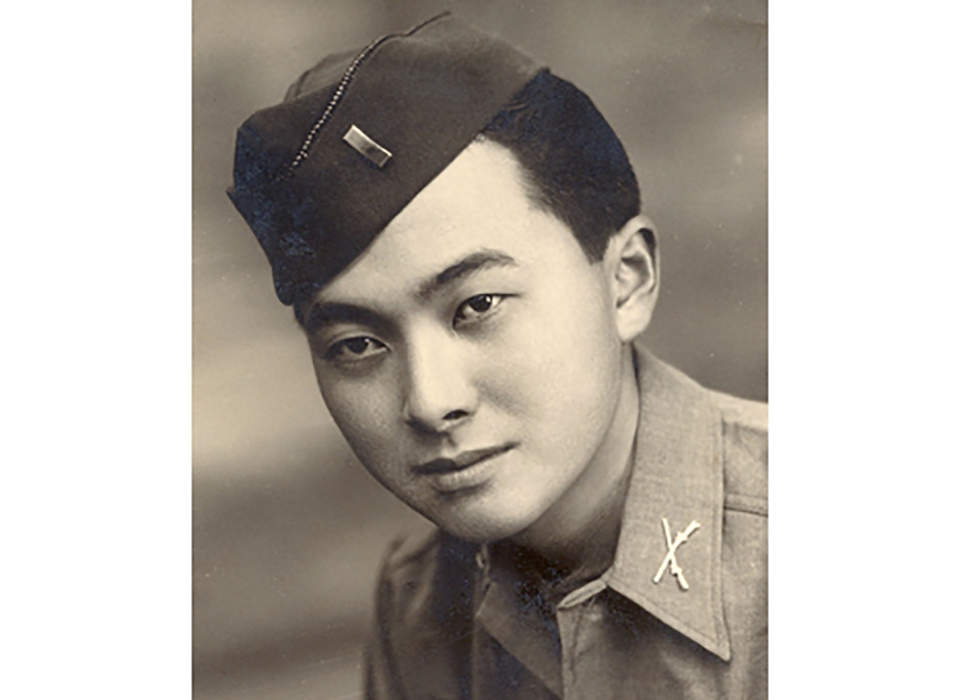
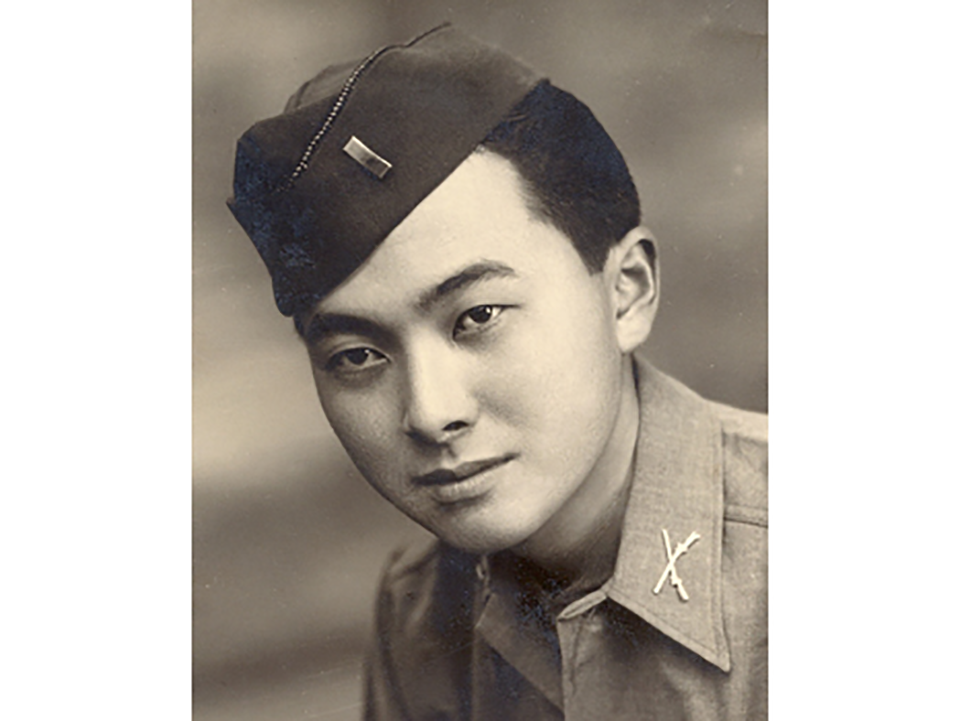
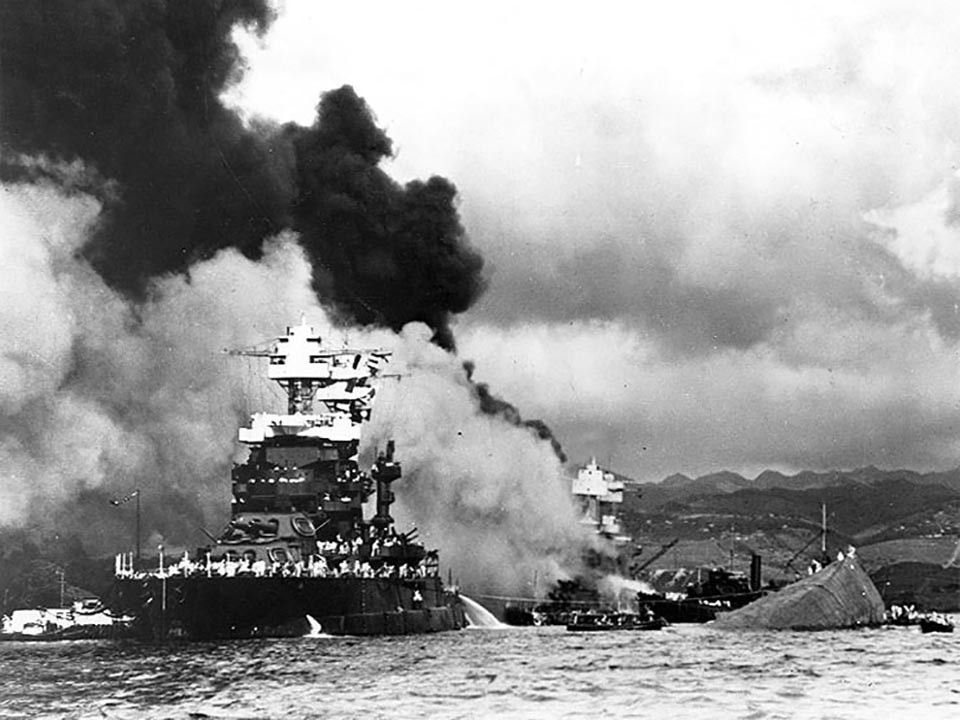
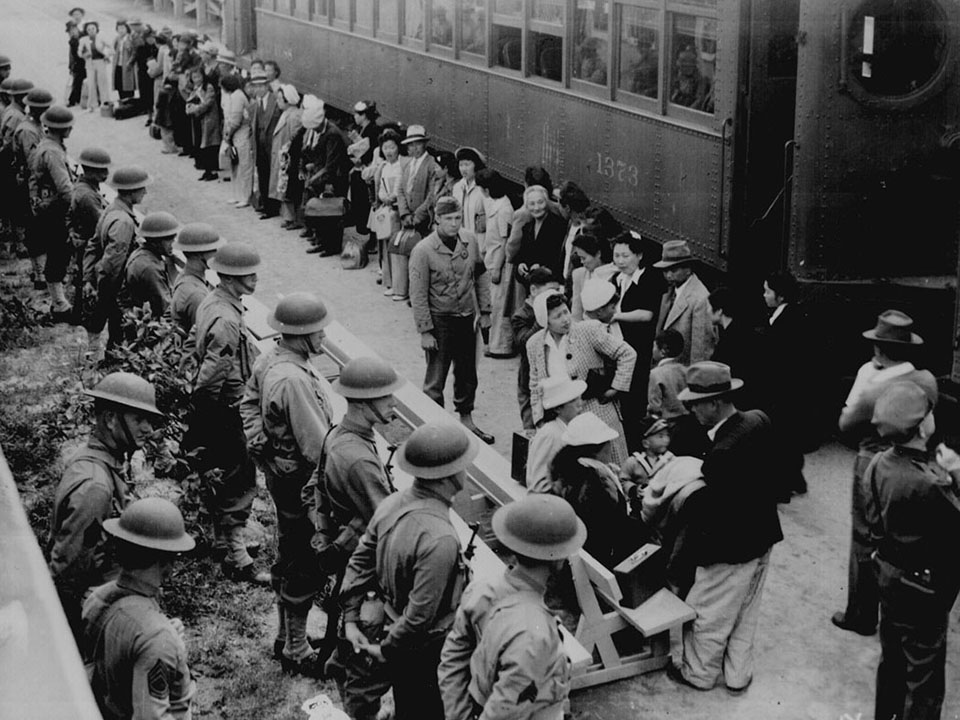
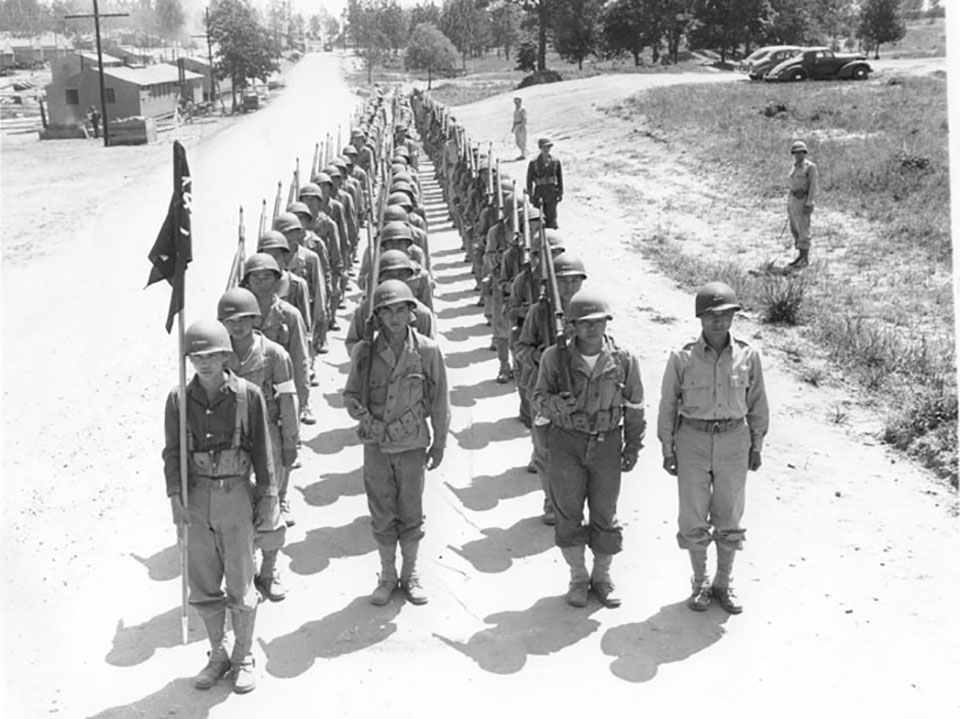
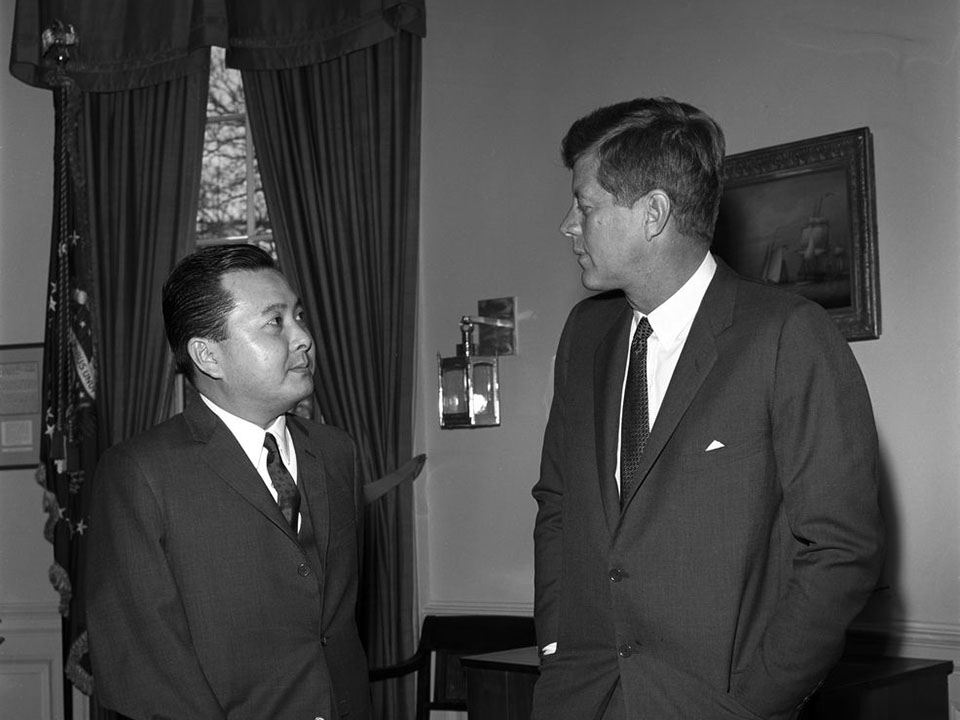
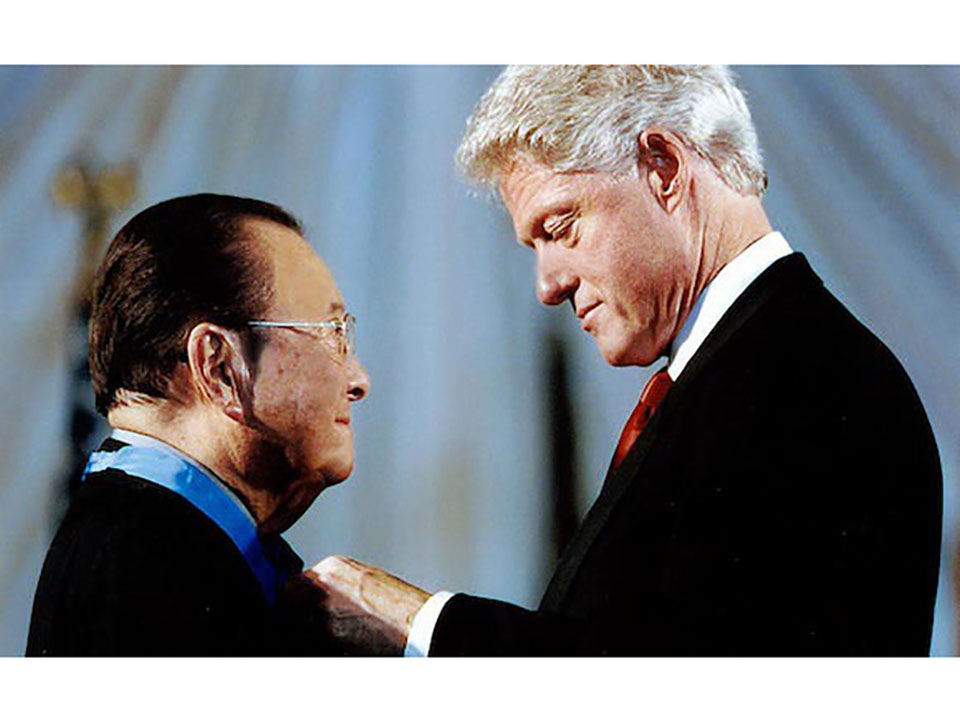
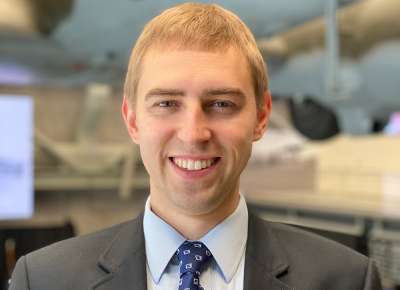



![Max Fuchs, New York City cantor, sings as Rabbi Sydney [sic] Lefkowitz, Richmond, VA, conducts the first Jewish services from Germany.](/sites/default/files/styles/max_650x650/public/2025-10/image1.jpg)



